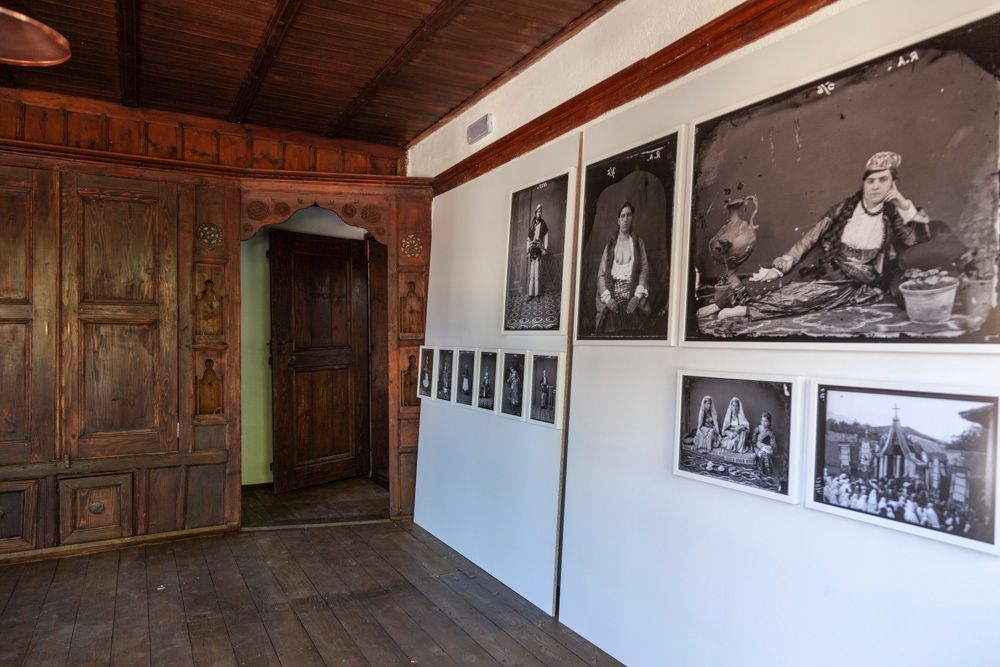Pietro Marubbi, a photographer in Ottoman-era Albania
–
"Many people with a mysterious past would enjoy the fresh air of remote land" Newspaper ‘Trieste Times’, 27 December 1865
During the 19th century, many Italian exiles found refuge in the territories of the Ottoman Empire as a result of the alliance with the Kingdom of Sardinia during the Crimean War (1853-56).
On their way to Constantinople, Italian exiles first arrived in the Dalmatian countries, Albanian territories or the Ionian Islands. Mostly patriots escaping the persecution of the Bourbon tyranny, they were known for their training in various professions, their loyalty to the host country and their human values, characterized by a high level of philanthropy.
Upon arriving in Albania, Italian exiles found a country completely abandoned by the Ottoman Empire, on the verge of insurrections in reaction to the Tanzimat Reforms (1839-1876), which aimed to reorganise the social and political foundations of the Empire. This tumultuous period was a very important chapter in the political and social history of Albania, the so-called National Awakening.
In this context, we notice several Italian exiles rise to prominence in Albanian, including the Salento doctor Gennaro Simini, who opened the first hospital; the Neapolitan musician Giovanni Canale, who founded the first musical band; and the painter Pietro Marubbi from Piacenza, who opened the first photo studio. The three Italians had one thing in common – each had been involved in insurrections against the then-ruling Bourbons. They settled in Shkodër, where they had a major impact on the life of the city.
Doctor Simini had been one of the organizers of the revolutionary movements against the Bourbon monarchs in the area of Lecce in 1848. As soon as he learned that an arrest warrant had been issued against him, thanks to the help of the Otranto fishermen, he escaped the death sentence. He was one of the first exiles to arrive in Shkodër. The history of the musician Canale is similar to that of the doctor. He left Naples because of his involvement in the insurrections against Ferdinand II.
Many Italians resided in Shkodër at that time. In 1858, a 22-year-old painter, a Mazziniano involved in the plot to assassinate Charles II, the Duke of Parma, arrived in Shkodër. He was imprisoned and later released due to amnesty. Pietro Marubbi's journey had begun in Trieste. From here, Italian exiles would make their way to the port of Zara and Corfu to leave their country for a better life.
Regions under Austrian influence viewed Italians leaving their country with suspicion. During his first stop in Zara, Marubbi was arrested and later imprisoned under the false charge of forging banknotes. Although the charges were never proved, the police exiled him to the territories of the Ottoman Empire. He stopped in Shkodër, where Marubbi found other Italians living a new life alongside local residents.
Due to economic problems, Marubbi opened a photography studio in the city with an Oriental atmosphere, which turned him into a very important person. Taking a photograph at the Marubi studio became a ritual initiated by foreign consuls, merchant families, clergymen and the everyday people who posed as his models.
Marubbi became a reference point for the region and the Empire itself, which commissioned him to make photographs. The collection of photo albums, hand-coloured photographs of people in traditional dress preserved in the archive of Sultan Abdul Hamid II in Istanbul and the archive of glass negatives of Marubbi preserved in the Marubi National Museum of Photography, are the most genuine evidence of the importance of this relatively-unknown photographer.
*The exhibition housed in a traditional building with Ottoman architecture recalls the structure of the house where Marubbi founded his photography studio. The curatorial concept of the exhibion is based on a selection of images which speak of the relationship between Italian exiles in Shkodër during the 19th century.
The photo-montage of Simini’s son – who poses three times in three different roles to promote his father’s hospital - or the photo of Maestro Canale devouring the head of his friend are some important details of the technical and contemporary realisation of these photographs. However, the exhibition does not aim to focus on such technical details, but rather on the stories behind the images and the context in which they are presented in Prishtina.
The images reflect the themes of the different rooms of the Ethnological Museum – not as a constraint, but rather as a means of honouring the authenticity of the space.
Exhibition Credits
- Curated by
Luçjan Bedeni
- Supported by
Manifesta 14, Prishtina
- Curated by
Luçjan Bedeni
- Translation
Manifesta 14 Prishtina
- Supported by
Manifesta 14, Prishtina
- Translation
Manifesta 14 Prishtina









